Xishan Scenic Area is located in the western suburbs of Kunming City, Yunnan Province, on the western bank of Dianchi Lake. It is a national 4A-level tourist attraction that integrates natural landscapes with humanistic history. Covering a total area of approximately 889 hectares, the scenic area is composed of a cluster of peaks including Huating Mountain, Taihua Mountain, and Luohan Mountain, with the highest peak reaching an altitude of 2,506 meters. Surrounded by lush green forests, it offers a panoramic view of Dianchi Lake and has long been renowned as "the most beautiful scenic spot in central Yunnan". Home to numerous cultural relics and historical sites such as the Longmen Grottoes, Huating Temple, and Taihua Temple, as well as abundant plant resources, it is a popular destination for Kunming residents and tourists to climb high for a distant view and experience the integration of nature and history.
History and Culture
The history of Xishan dates back to the Tang Dynasty. During the Nanzhao and Dali Kingdom periods, it had already become a prominent site for Buddhist activities. Huating Temple, first built in the Yuan Dynasty (1320 AD), was originally named "Yuanjue Temple". Later expanded during the Ming and Qing Dynasties, it developed into one of the largest Zen monasteries in Yunnan. Taihua Temple, founded in the Ming Dynasty (1390 AD), derives its name from its location at the foot of Taihua Mountain. The temple preserves cultural relics such as stone inscriptions related to the legend of the "Peacock Gallbladder" from the Qing Dynasty.
The most famous humanistic attraction in Xishan is the Longmen Grottoes. Carved during the Qianlong reign of the Qing Dynasty (starting in 1783 AD) and taking 72 years to complete, it is the southernmost treasure trove of ancient grotto art in China. Built along the cliffs, the grottoes include core areas such as Datian Pavilion and Ciyun Cave, with carvings of Buddha statues, Taoist deities, and various auspicious patterns, demonstrating the superb standards of stone carving art in Yunnan during the Qing Dynasty.
Major Attractions
Longmen (Dragon Gate)
Perched on the cliffs of Luohan Mountain in Xishan, Longmen is the core attraction of the scenic area. Carved in 1783 AD, it covers a total area of about 2,000 square meters and consists of Ciyun Cave, Yunhua Cave, and Datian Pavilion. Inside Datian Pavilion, there are statues of Kuixing (the god of literary fame) and Emperor Wenchang. The cliff walls are engraved with reliefs such as "Kuixing Pointing at the Dipper" and "The Eight Immortals Crossing the Sea". Its stone archway inscribed with "Longmen" is a classic photo spot, offering a magnificent view of Dianchi Lake.
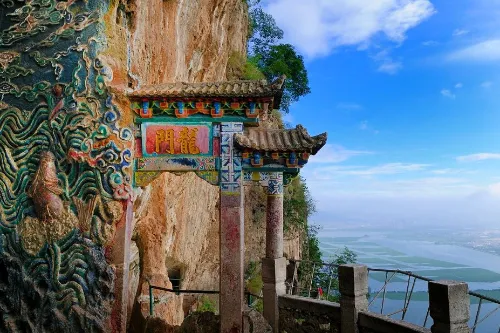
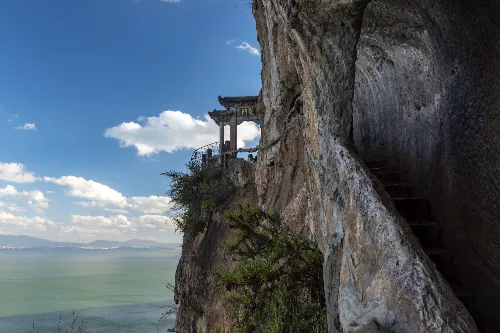
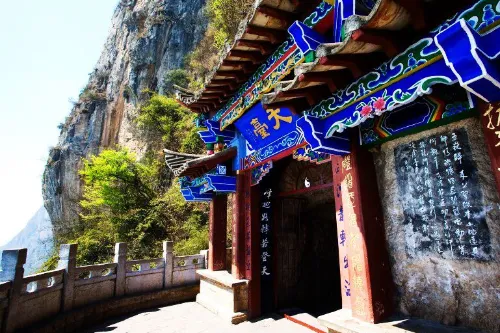
Huating Temple
As one of the largest Han Buddhist monasteries in Yunnan, Huating Temple covers an area of 12,400 square meters. Inside the Mahavira Hall, there are statues of the Three Buddhas and 500 Arhats. Its architectural style combines features of the Ming and Qing Dynasties. Surrounded by ancient cypress trees, the temple boasts a serene environment.
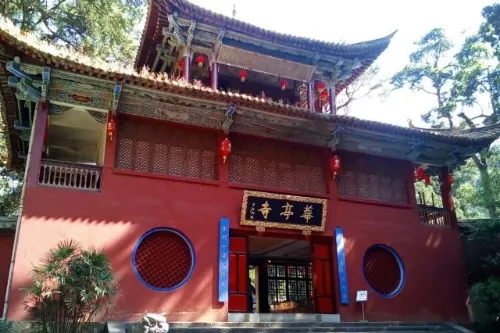
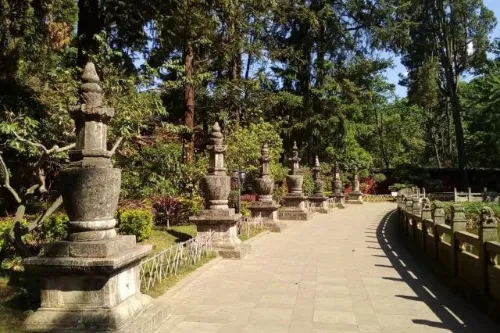
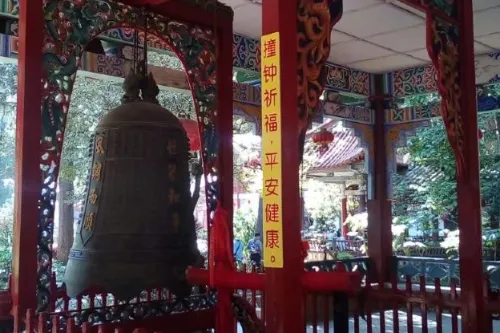
Taihua Temple
Famous for its lush flowers and trees, Taihua Temple covers an area of approximately 6,000 square meters. The temple grounds are home to rare plants such as ancient plum trees from the Song Dynasty and camellia trees from the Ming Dynasty. The "One Vast Green" Pavilion inside the temple is an excellent spot to enjoy the scenery of Dianchi Lake—climbing the pavilion allows visitors to overlook the integrated view of Kunming urban area and Dianchi Lake, where the sky and water merge into one.
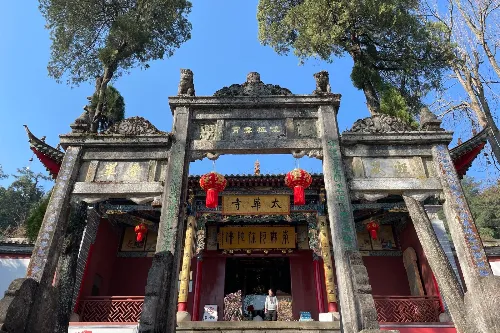
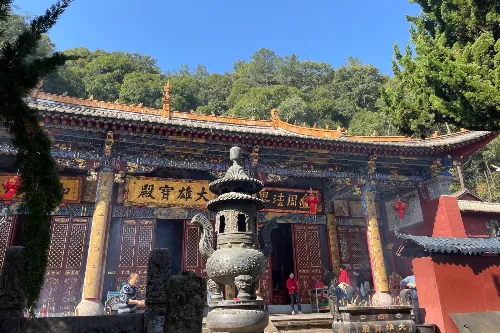
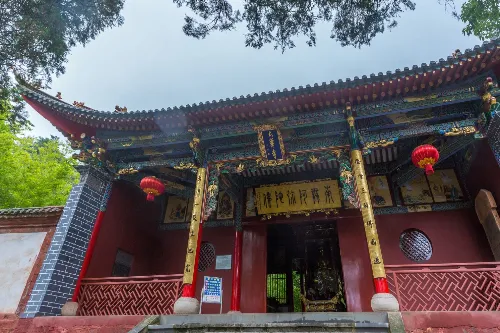
Nie Er's Tomb
This is the resting place of Nie Er, the renowned people's musician. Covering an area of 1,200 square meters, the tomb area consists of a tomb passage, a statue, and the mausoleum itself. The bronze statue of Nie Er stands 2.4 meters tall, facing Dianchi Lake. The platform in front of the tomb can accommodate hundreds of people for tribute, making it a patriotic education base.
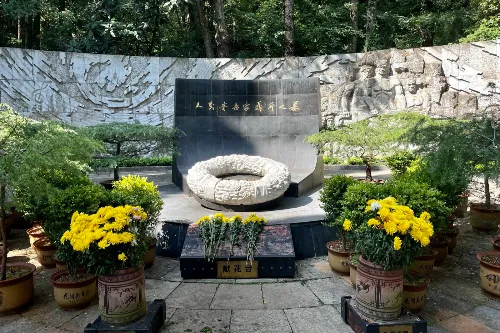
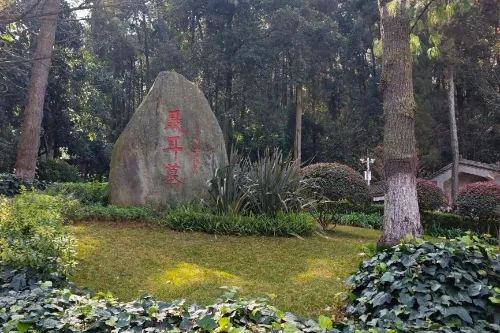
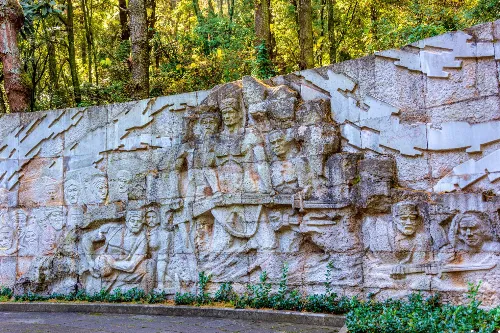
Tour Routes
Classic One-Day Tour Routes:
1. Enter through the North Gate → Take the scenic area shuttle bus (one-way fare: ¥15) to the entrance of Longmen Grottoes → Visit Ciyun Cave → Yunhua Cave → Datian Pavilion → Take photos at the "Longmen" stone archway → Walk downhill to Nie Er's Tomb → Visit Nie Er Memorial Hall.
2. Enter through the South Gate → Hike uphill (approximately 2 hours) → First visit Taihua Temple → Walk along the trail to Huating Temple → Try vegetarian food → Continue climbing to the Xiaoshilin Scenic Viewing Platform → Enjoy the panoramic view of Dianchi Lake.
Leisure Route: Take the cable car (one-way fare: ¥50, round-trip fare: ¥70) from the lakeside of Dianchi Lake directly to Xishan Forest Park → Stroll in Yulan Garden → Visit Sheng'an Shrine → Relax and enjoy the scenery at the "One Vast Green" Pavilion in Taihua Temple.
Travel Tips
- Best Seasons: March to May (when cherry blossoms are in full bloom) and September to November (when the weather is clear and crisp). Avoid the rainy season (June to August) as mountain roads can be slippery.
- Wear comfortable sports shoes. Some sections of the hiking trails are steep, and a full hike takes about 3-4 hours—bringing hiking poles is recommended.
- Visit Longmen Grottoes in the morning (the soft light is ideal for photography), experience the Zen atmosphere at Taihua Temple and Huating Temple in the afternoon, and watch the sunset over Dianchi Lake near Nie Er's Tomb in the evening.
- There are relatively few shops in the scenic area, so it is advisable to bring your own drinking water and snacks. The temperature difference at the mountain top is significant, so prepare a light jacket.
Notes
- Some sections of Longmen Grottoes are narrow and steep; please pay attention to safety and do not climb outside the guardrails.
- Loud talking is prohibited inside temples, and permission from staff must be obtained before taking photos of Buddha statues.
- Protect the plants. Xishan is an ecological protection area—do not pick wild flowers or damage ancient trees.
- Abide by safety regulations when taking the cable car. The cable car may be temporarily out of service in windy weather; it is recommended to check the scenic area announcement in advance.
Transportation
- Bus: Take Bus Routes 6, 51, or 94 from the urban area to Xishan Park Station (fare: ¥2). Tourist shuttle buses are available during holidays (fare: ¥5).
- Metro: Take Metro Line 3 to Xishan Park Station, exit from Gate A, and transfer to the scenic area shuttle bus (fare: ¥5 per person) to the scenic area entrance.
- Self-Driving: Navigate to "Xishan Scenic Area". There are parking lots at both the North Gate and South Gate, with a daily parking fee of ¥5-¥10 for cars.
- Cable Car: Take the cross-lake cable car from Haigeng Dam of Dianchi Lake directly to Xishan Scenic Area (one-way fare: ¥120, round-trip fare: ¥200). The journey takes about 30 minutes, offering an aerial view of Dianchi Lake.
Opening Hours
The scenic area is open 24 hours a day; Longmen Grottoes are open from 8:00 to 18:00 (entry stops at 17:30); Huating Temple and Taihua Temple are open from 8:30 to 17:30.
Tickets
The scenic area is open to the public free of charge.
Separate ticket for Longmen Grottoes: ¥30 per person.
One-way ticket for Longmen Cable Car: ¥25 per person.
You can search for the official WeChat public account of the scenic area "昆明西山风景区" to get the latest updates or purchase tickets online.
Online Booking
Click here to jump to the Trip.com ticketing platform for ticket purchase.


